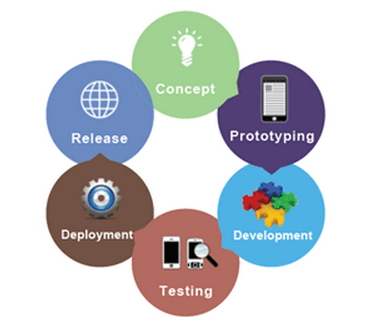
The system invokes each of these callbacks as an activity enters a new state. Thanks for reading and not getting hurt (hopefully). onCreate(), onStart(), onResume(), onPause(), onStop(), and onDestroy(). onResume() When the Activity finally gets rendered on the. we can perform any operation related to UI components.
#ANDROID LIFE CYCLE COMPONENTS ANDROID#
What is the use of this in real application. In this tutorial we will learn what Activity in Android is, how important is, how Activity lifecycle controls the App functioning, and how Activity states can be used to make your app better. These components help you produce better-organized, and often lighter-weight code, that is easier to maintain.

#ANDROID LIFE CYCLE COMPONENTS CODE#
This post is more like a rant, hope your ego isn’t hurt so far and you learnt to make the code a better place. A Service is an application component that can perform long-running operations in the background. Lifecycle-aware components perform actions in response to a change in the lifecycle status of another component, such as activities and fragments. ✅ Use a Channel or a SharedFlow or the hacky solution Google provided and shoot yourself in the foot with writing boilerplate code. The Lifecycle we will introduce in this article is one of the lifecycle-related libraries. It contains a number of column architecture related components. In this instance, the OS killed the application in the background and the application did not maintain its state as part of the lifecycle. Android Architecture Components is an application architecture built by Google that builds an APP. What is the use of this in real application. Layouts attached in the window in onCreate() method only. That means, when user enter into an application, he can see the Activity thats been created in onCreate() lifecycle method. 🚫 Do not use MutableLiveData or flow to show a Toast a SnackBar or even worse a Dialog or something that’ll just spam the user endlessly. The Android Architecture Components refer to the 'architecture components' here. Lifecycle-aware components perform actions in response to a change in the lifecycle status of another component, such as activities and fragments. What is the life cycle of an Android activity In android sdk framework, Every android Activity(Window) having lifecycle methods. It exposes state to the UI and encapsulates related business logic. bookmarkborder The ViewModel class is a business logic or screen level state holder. In order to use the event, you need to getContentIfNotHandled() first in order to see if the content is consumed, I just deleted that thing and went to use a Channel. Jetpack Compose Implement a ViewModel Use coroutines with ViewModel The lifecycle of a ViewModel Clearing ViewModel dependencies ViewModel overview Part of Android Jetpack. Android Application class lifecyle documentation. This codelab introduces you to the following lifecycle-aware architecture components for building Android apps: ViewModel - provides a way to create and retrieve objects that are bound to a specific lifecycle.


* Returns the content, even if it's already been handled. I was learning the Lifecycle Aware Components from the Codelab which starts from Chronometer example. Override fun onViewCreated ( view : View, savedInstanceState : Bundle ?) /** Public class ChronoActivity2 extends AppCompatActivity void onCreate(Bundle savedInstanceState).

These are the code files for referenceĬhronoActivity2.java package .step2 The four different phases of the lifecycle of the component are the Initial Phase, the Mounting Phase, the Updating Phase and the Unmounting Phase. I was learning the Lifecycle Aware Components from the Codelab which starts from Chronometer example.


 0 kommentar(er)
0 kommentar(er)
